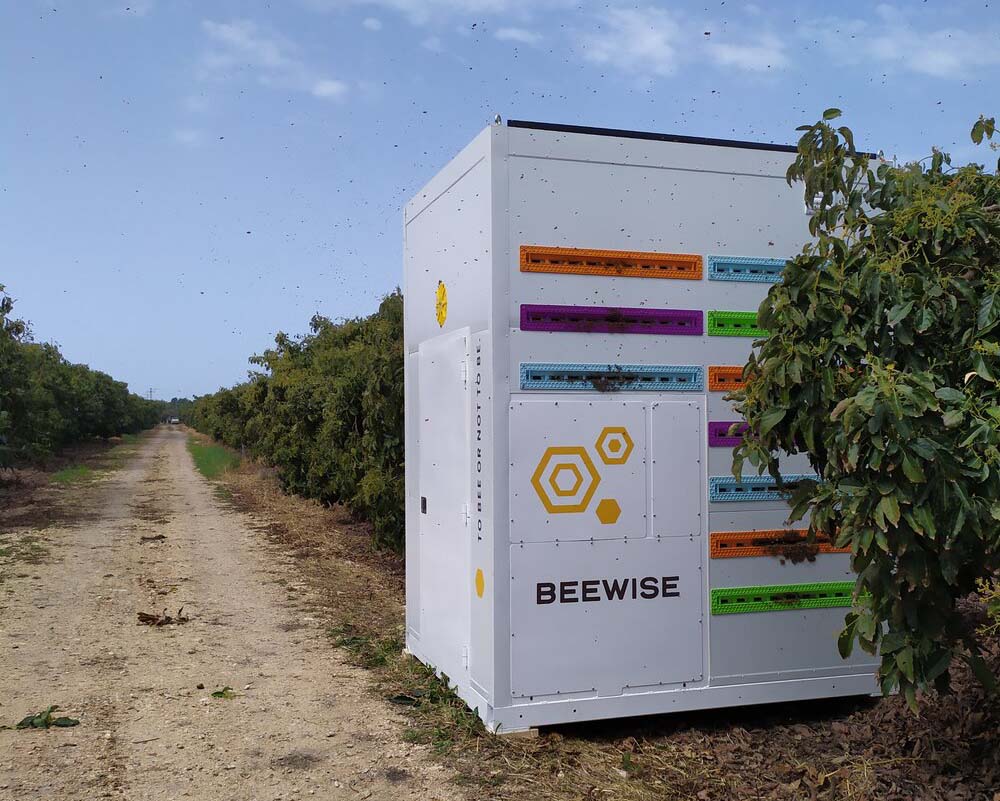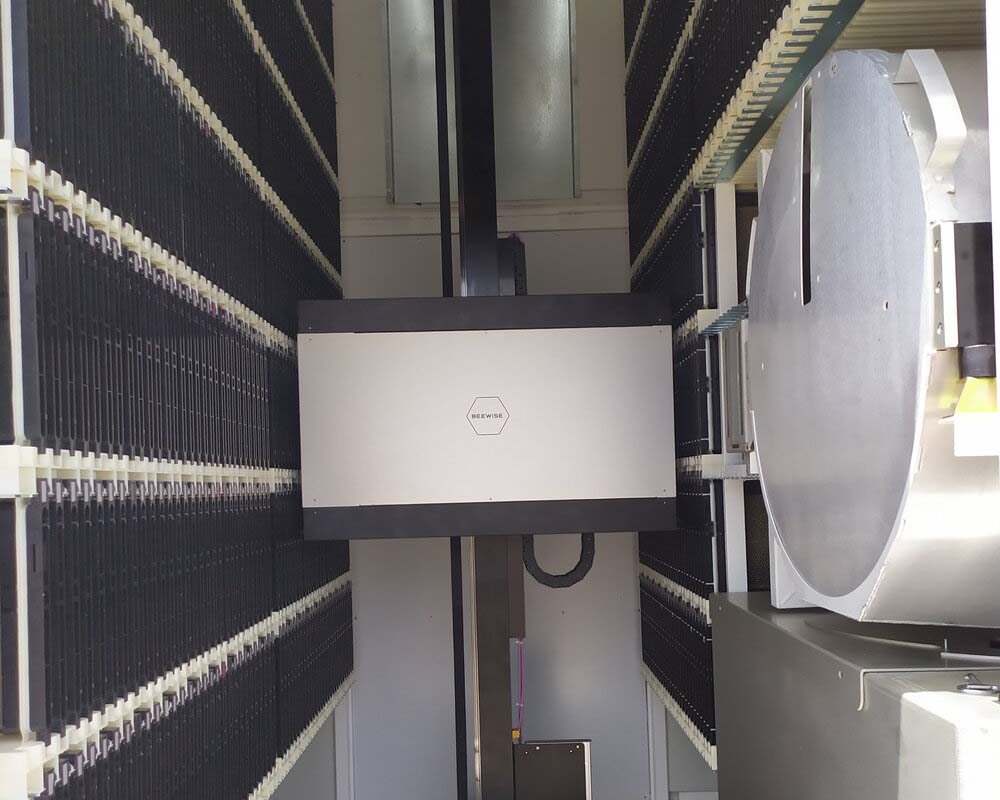
Beewise’s BeeHome is a robotic beehive that can reduce bee deaths and increase honey yields. | Source: Beewise
Every year, around 35% of all bee colonies on the planet collapse, according to Beewise CEO Saar Safra. This is a phenomenon called colony collapse disorder, and it occurs when worker bees abandon the colony and queen.
Stopping this decline is crucial. Seventy five percent of all fruits, vegetables, seeds and nuts we consume relies on pollination from bees. Beewise, a company with offices in California and Israel that recently raised $80 million, is hoping to save those bees from collapse and other threats by reinventing technology that’s more than 150 years old – the modern beehive.
“We want to reverse the trend,” Safra said. “We don’t only want to stop colony collapse, we want to reverse the trend and start increasing populations of bees on the planet to the levels they used to be.”
Inside BeeHome

BeeHome automatically prevents swarming and harvests honey using artificial intelligence. | Source: Beewise
Beewise’s solution is a robotic beehive called BeeHome. It is solar powered and can autonomously care for hives of bees. The home keeps pests away, automatically harvests honey, attends to the bees’ health and can even prevent swarming. This is a process in which a single colony splits into two or more distinct colonies.
BeeHome can hold up to 24 beehives and contains a robotic system that tends to the needs of bees. Bees can leave from either side of the box, while the robotic system sits in the center.
“The robot monitors and identifies the bees’ needs in real time using artificial intelligence and computer vision,” Safra said. “For example, if it’s November and there’s no foliage, there’s no flowers. There’s no source of nectar and pollen for the bees, and the robot will take some food from within the device’s containers and feed the bees.”
Beyond providing food and water for the bees, BeeHome can deter pests. According to Safra, one of the biggest pests bee keepers are working to deter today are varroa mites. Varroa mites are similar to ticks, they latch themselves to the bees and infect them with viruses. The mites are typically handled with pesticides.
“We’re the only solution on the planet today that allows treatment of varroas without chemicals,” Safra said. “We use heat treatment. Essentially, we head up the brood frames without the bees in them, and we head them to a certain temperature that doesn’t hurt the brood, doesn’t hurt the larva of the bees, but actually kills the pest.”
Beewise’s impact
According to Safra, BeeHomes only see 8% colony collapse a year, reducing overall bee mortality by 80%. On average, beekeepers are able to harvest 60% more honey from BeeHomes than traditional beekeeping boxes.
Typically, beekeepers will allow bees to accumulate honey during heavy honey flow seasons. At the end of the honey flow season, usually two to three months long, the beekeepers harvest the honey. Beekeepers typically manage hundreds of hives, and don’t have the time to check on each of them individually to see if they have enough honey to harvest.
BeeHome can give each frame inside the structure attention. This means it doesn’t have to wait for an entire colony to produce a lot of honey. Instead, BeeHome automatically harvests each frame when it’s full. When the frame fills with honey, it gives a signal to BeeHome, which then begins harvesting the honey.
“There’s an internal centrifuge, which turns very quickly. There’s a protocol of how long it needs to turn the frame,” Safra said. “Essentially, the robot uncaps the frame so that the honey will be free to flow, puts it in the centrifuge, the centrifuge turns for about eight to 15 minutes, depending on how sticky the honey is. Then the honey is collected in a big container, and that frame is being put back to work in the colony to gather more honey right away.”
Beewise’s unique approach to saving the bees is what attracted investors like Insight Partners, the lead investor on the company’s most recent Series C round. Fortissimo Capital, Corner Ventures, lool ventures, Atooro Fund, Meitav Dash Investments and Sanad Abu Dhabi also participated in the round.
“We have a lot to do,” Safra said. “We need to lower our colony collapse numbers significantly, we need to spread and distribute this device.”
Safra also said the company was working on further developing the device and hiring on new talent.
The post This robotic beehive wants to save the bees appeared first on The Robot Report.